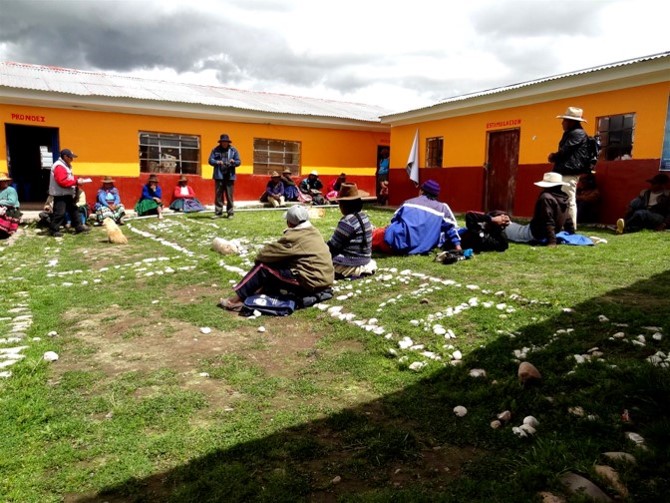Adaptation interventions and their effect on vulnerability in developing countries: Help, hindrance or irrelevance?

Introduction
Inequalities in climate change adaptation have long been on the radar of international institutions. Inequality shapes climate change adaptation and, if it is not accounted for in adaptation design, implementation or evaluation, interventions may either be ineffectual or – worse – increase the vulnerability of those they seek to aid. Identifying the mechanisms through which negative effects can unfold in adaptation interventions must inform future adaptation policy.
This paper critically reviews the outcomes of internationally-funded interventions aimed at climate change adaptation and vulnerability reduction. It highlights how some interventions inadvertently reinforce, redistribute or create new sources of vulnerability.
An independent, critical review of adaptation interventions is timely as the global stocktake of the Paris Agreement requires countries to measure progress on climate adaptation. However, in order for adaptation interventions to contribute to equitable and sustainable vulnerability reduction, and to measure progress in this endeavour, the structures around financing, planning, implementation, monitoring and evaluation of interventions that frame climate intervention processes may need to be redesigned.
This weADAPT article is an abridged version of the original text, which can be downloaded from the right-hand column. Please access the original text for research purposes, full references, or to quote text.
Methods and Tools
This paper is based on a review of 34 empirical studies of adaptation interventions,selected on the criteria that actual adaptation actions were implemented through programmes and projects all nominally labelled ‘adaptation’ in their objectives. The selected interventions were either funded directly through multilateral organisations or mechanisms, or through national or local actions supported by bilateral or multilateral aid. The cases were iteratively analysed to distinguish impacts of the actions on different groups within a vulnerability context, on the socio-environmental conditions comprising a vulnerability context, and on the processes and inequitable relations generating socially differentiated vulnerability. Findings from this analysis were situated in the broader adaptation and critical development literature, including reviews and conceptual development. Evidence of how different ways of planning and implementation contributed to the impacts of the interventions on vulnerability was then examined. For the second component, we complemented our analysis of empirical case studies with a review of a broader set of past studies that describe the mechanisms through which adaptation interventions are implemented, including planning, assessment, monitoring, evaluation, knowledge and participation processes.
Outcomes
An important lesson from past adaptation interventions is that within current adaptationcum development paradigms, inequitable terms of engagement with ‘vulnerable’ populations are reproduced and the multi-scalar processes driving vulnerability remain largely ignored. In particular, instead of designing projects to change the practices of marginalised populations, learning processeswithinorganisations andwith marginalised populations must be placed at the centre of adaptation objectives. We pose the question of whether scholarship and practice need to take a post-adaptation turn akin to post-development, by seeking a pluralism of ideas about adaptation while critically interrogating how these ideas form part of the politics of adaptation and potentially the processes (re)producing vulnerability. We caution that unless the politics of framing and of scale are explicitly tackled, transformational interventions risk having even more adverse effects on marginalised populations than current adaptation.
Lessons Learnt
- Although adaptation needs are significant, and the focus on adaptation interventions is welcome, the review shows that adaptation interventions may reinforce, redistribute or create new vulnerability.
- The mechanisms that create exacerbation of vulnerability are:
- shallow understanding of the vulnerability context
- inequitable nature of stakeholder participation in the design and implementation of adaptation
- retrofitting of adaptation into existing development agendas
- lack of critical engagement with how ‘adaptation success’ is defined.
- Overcoming these challenges requires rethinking how adaptation and development interventions are done, in particular the need for:
- engaging more deeply with vulnerability contexts
- having real involvement of marginalised groups
- placing learning processes within organisations and with marginalised populations at the centre of adaptation objectives
- Unless adaptation is rethought, transformational interventions may also worsen vulnerability.
Citation
Siri Eriksen, E. Lisa F. Schipper, Morgan Scoville-Simonds, Katharine Vincent, Hans Nicolai Adam, Nick Brooks, Brian Harding, Dil Khatri, Lutgart Lenaerts, Diana Liverman, Megan Mills-Novoa, Marianne Mosberg, Synne Movik, Benard Muok, Andrea Nightingale, Hemant Ojha, Linda Sygna, Marcus Taylor, Coleen Vogel, Jennifer Joy West (2021) Adaptation interventions and their effect on vulnerability in developing countries: Help, hindrance or irrelevance?, World Development, Volume 141: 2021.
Further reading
Related resources
- Maladaptation: An Introduction
- Transformational Adaptation: An Introduction
- Unpacking Transformation: A framework and insights from adaptation mainstreaming
- Transformation in Adaptation: Learning from ASSAR’s Regional Diagnostic Studies
- Transforming Development and Disaster Risk
- Is adaptation reducing vulnerability or redistributing it?
- Addressing the risk of maladaptation to climate change
- Pathways to transformative climate adaptation in southern African cities
- Careless Development Models in Yolanda's Wake
(0) Comments
There is no content